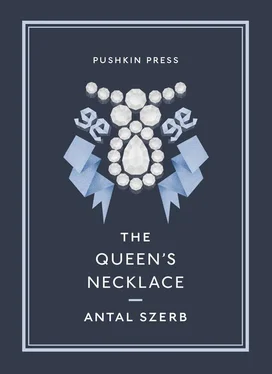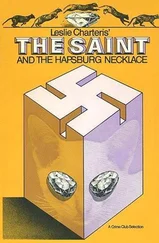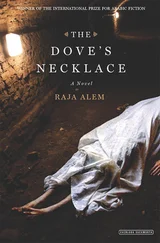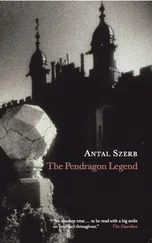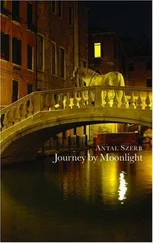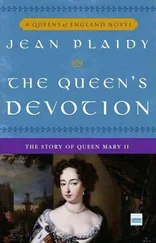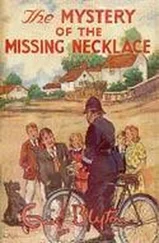This matter of lisping makes me think that perhaps the biggest of all surprises awaiting our traveller to 1784 would be the phenomena associated with the cult of sensibility — the sentimental emotionalism one sees paraded, for example, in a painting of a pretty lace-maker, with its ostentatious display of good-heartedness and generosity towards the subject, expressed through the colours used for her physical form, her dress and facial expression. A brief glance at some of the pictures of the period will make this immediately clear.
The work of Greuz is not now thought of as being of the first rank. But he was the most popular painter of his time, and even the Academy deferred to this general opinion against their own better judgement. There is just one emotion conjured up in his well-known paintings: this same fashionable good-heartedness. It is not the good-heartedness we find in real life, but in the theatre; and behind it lurks a deep sensuality. To quote the Goncourts’ comparison, Greuze portrays his innocent maidens as one might parade a fresh young whore before an old man hoping for rejuvenation.
But the engravings are even more typical. I have two examples before me. One is entitled The Abolition of Serfdom , done by Née in 1786. In it, an obvious landowner, his arms held out in a gesture of giving, is hurrying out of the pillared entrance to his mansion towards the distant crowd standing below, whose predominant figure is a man, clearly a peasant, making the same open-handed gesture to the master — not as an offer to take his hand, but to indicate deep gratitude, and to embrace not him (that would be going too far) but the figure of Goodness hovering nearby. His face is ecstatic, raised upwards with a gentle happiness, while the arms of the women kneeling around are held aloft in corresponding gestures. The landlord too is accompanied by a train of followers (in those days no one ever went about alone) — an audience who contemplate the edifying scene with sweet emotion.
The title of the second picture is rather difficult to translate: L’agriculture considerée —perhaps The Two Sides of Agriculture? It depicts an interior, with a bowl of sugar placed on a table. Once again the landlord greets the simple land-worker with a proffered embrace that seems like an allegorical gesture, while the labourer, who, unlike him, has no wig, makes the same gesture of the hands towards him. The audience here can be found sitting around the table: two ladies wearing enormous hats, and two men in wigs, with somewhat impassive faces — the same figures and gestures of the arms, sentimental and awkward, embracing and not embracing, expressing some mysterious, undefined but overwhelming love. We can be confident that gestures such as these would present themselves on every side to the occupant of our time machine.
The wave of sentimental passion for nature promoted by Rousseau sought out everything that was moving, good and profoundly human in nature. The nobility built themselves village-style houses— ermitages —to escape from the noise and bustle of the world, shedding the burdens of convention to spend their time in proximity to solid, upright village folk. We have already seen Marie-Antoinette’s little hameau . Such cottages were also a response to the mood of the times. In 1782 Grimm noted the same topics recurring, with titles such as The Land, Gardens, The French Georgics, Nature, Fields , and, once again, Nature. Among the most popular of these poems is the piece by the Abbé Delille on gardens. In it he speaks with scorn of the coldly geometric gardens of the previous age, which were so barely ‘natural’:
Loin donc ces froids jardins, colifichet champêtre,
Insipides réduits, dont l’insipide maître
Vous vante, en s’admirant, ses arbres bien peignés,
Ses petits salons verts, bien tondés, bien soignés.
Far from these cold gardens, these rustic baubles,
These insipid retreats whose insipid owners
Brag, self-admiringly, of their well-groomed trees,
Their little green salons, so well cared-for and tended.
Delille goes on to state what it is that he and his contemporaries look for in a garden, and in nature — the human heart.
Il est des soins plus doux, un art plus enchanteur,
C’est peu de charmer l’oeil, il faut parler au coeur.
Avez-vous donc connu ces rapports invisibles
Des corps inanimés et des êtres sensibles?
Avez-vous entendu des eaux, des prés, des bois
La muette eloquence et la secrète voix?
There are sweeter cares, a more enchanting art:
To charm the eye is nothing: you must speak to the heart.
Have you ever known the invisible rapport
Between inanimate things and conscious beings?
Have you listened to the wordless eloquence
Of the waters, the fields and the woods?
Bernadin de Saint Pierre, the author of Paul et Virginie , writing in this period found in nature the love of God and a benign and sensitive Providence. In his Études de la nature —Studies of Nature — he asserts that volcanoes exist because if Nature did not locate its great chimneys beside the oceans, then oils and fats from plants and animals would coat the surface of the water; that cows have four udders and only one or perhaps two calves at a time because Providence reserves two of the udders for supplying humans with milk, and that fleas are black so that they will stand out against human skin and thus be easier to pick off.
This sentimentality is simply a loftier, more sublime form of hedonism. People want to take pleasure in the soul, in the human heart, in their own sensitivity and in the fatal présent du ciel —the fateful gift from Heaven. Above all, they want to enjoy the emotions and the sensitivity that their own goodness, or that of others, inspires in them. The War of American Independence, which the French supported, gave rise to a sort of sentimental patriotism — the enthusiasm was intense. They even shed their blood for the fine, upstanding Americans, for Benjamin Franklin, with his great clumsy shoes that stood for everything simple and natural, for the gentle-souled Quakers, and for the brave and open-hearted pioneers of the virgin forests, who were taming the lands so they could be worked by a peace-loving people.
In the theatre, these sensitive hearts, kindly fathers, chaste maidens, heroic fiancés, faithful lovers and steadfast spouses abound, and virtue is everywhere. Actors praise the virtue of princes to storms of applause, and a minute later the princes sitting in their boxes renew the applause when the same actors praise the virtues of the common people. And the newspapers run columns devoted to Traits d’humanité in which heart-warming good deeds are recorded.
Count Haga, whom we have joined on his travels through France, had, as his favourite reading when young, a novel by Marmontel entitled Bélisaire . What was it about, this tale that so captivated the heart of the youthful prince? Belisarius, the Byzantine general, has in his old age been the victim of a court intrigue, has gone into exile, and is now a beggar making his way back to his ancestral mansion. Along the way, he comforts all who take pity on him, explaining that they should not be angry with the King — he certainly feels no anger himself — because he had been misled by others, and besides, being exiled was no great hardship, since what mattered was to have a benevolent heart. No one today would be able to read such a tale of good-heartedness and virtue through to the end, but at the time frivolous and worldly young men were bowled over by it, as must have been the case with Count Haga.
Читать дальше
